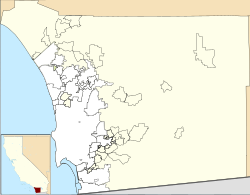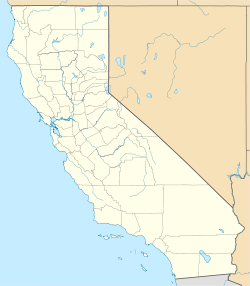
Julian is a census-designated place (CDP) in San Diego County, California. As of the 2020 census, the population was 1,768, up from 1,502 at the time of the 2010 census.

Pioneer Square is a neighborhood in the southwest corner of Downtown Seattle, Washington, US. It was once the heart of the city: Seattle's founders settled there in 1852, following a brief six-month settlement at Alki Point on the far side of Elliott Bay. The early structures in the neighborhood were mostly wooden, and nearly all burned in the Great Seattle Fire of 1889. By the end of 1890, dozens of brick and stone buildings had been erected in their stead; to this day, the architectural character of the neighborhood derives from these late 19th century buildings, mostly examples of Richardsonian Romanesque.

The cuisine of California reflects the diverse culture of California and is influenced largely by European American, Hispanic American, East Asian and Oceanian influences, and Western European influences, as well as the food trends and traditions of larger American cuisine.
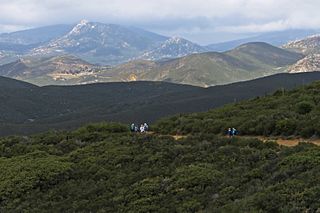
Cuyamaca is a region of eastern San Diego County, California. It lies east of the Capitan Grande Reservation in the western Laguna Mountains, north of Descanso and south of Julian. Named for the 1845 Rancho Cuyamaca Mexican land grant, the region is now dominated by the 26,000-acre (110 km2) Cuyamaca Rancho State Park. Within the park is the prominent Cuyamaca Peak, the second-highest mountain in San Diego County at 6,512 feet (1,984.9 m). The modern community of Cuyamaca is on the north side of the lake. It consists of the Cuyamaca Woods, Cuyamaca Resort, and North Peak areas.

Paul Revere Williams, FAIA was an American architect based in Los Angeles, California. Most of the buildings he designed were in Southern California and included the homes of numerous celebrities, such as Frank Sinatra, Lucille Ball and Desi Arnaz, Lon Chaney, Barbara Stanwyck, and Charles Correll. He also designed many commercial, institutional and civic buildings.

Old Town San Diego State Historic Park is a state protected historical park in the Old Town neighborhood of San Diego, California. The park commemorates the early days of San Diego; it includes many historic buildings from the period 1820 to 1870. The park was established in 1968. In 2005 and 2006, California State Parks listed Old Town San Diego as the most visited state park in California.
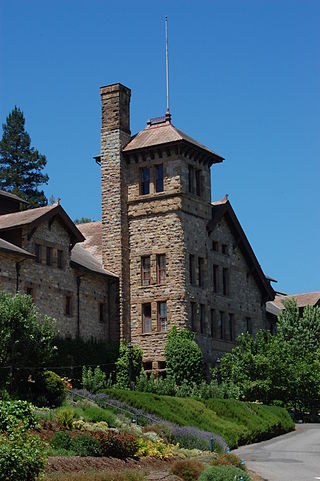
The Culinary Institute of America at Greystone is a branch campus of the private culinary college the Culinary Institute of America. The Greystone campus, located on State Route 29/128 in St. Helena, California, offers associate degrees and two certificate programs in culinary arts and baking and pastry arts. The CIA at Greystone and the Culinary Institute of America at Copia make up the school's California branch.

Colonel Allensworth State Historic Park is a state park unit of California, United States, preserving Allensworth, the only California town to be founded, financed and governed by African Americans. The small farming community was founded in 1908 by Lt. Colonel Allen Allensworth, Professor William Payne, William Peck, a minister; John W. Palmer, a miner; and Harry A. Mitchell, a real estate agent, dedicated to improving the economic and social status of African Americans. Colonel Allensworth (1842–1914) had a friendship with Booker T. Washington and was inspired by the Tuskegee Institute and development in its neighboring town. Allensworth hoped to develop the "Tuskegee of the West".
America Newton was one of the original African-American pioneers who helped to found the former mining town of Julian, California, in the Cuyamaca Mountains east of San Diego. She was among the earliest female African-American settlers in the area. Newton was a former slave who provided laundry services in Julian during its gold rush days and beyond. She resided in Julian for more than 50 years.
A. E. "Fred" Coleman was an American former slave credited with discovering gold in Julian, California and thus launching a gold rush in that area.

Old Town is a neighborhood in San Diego, California. It contains 230 acres (93 ha) and is bounded by Interstate 8 on the north, Interstate 5 on the west, Mission Hills on the east and south. It is the oldest settled area in San Diego and is the site of the first European settlement in present-day California. It contains Old Town San Diego State Historic Park and Presidio Park, both of which are listed on the National Register of Historic Places.

The U.S. Grant Hotel is a historic hotel in downtown San Diego, California. It operates under a franchise of Marriott International as part of their Luxury Collection brand. One of the oldest hotels in San Diego, it is listed on the National Register of Historic Places. It is 11 stories high and has 270 guest rooms in addition to meeting rooms and multiple ballrooms.

The Grand Pacific Hotel is a historic building in Seattle, Washington, United States. It located at 1115-1117 1st Avenue between Spring and Seneca Streets in the city's central business district. The building was designed in July 1889 and constructed in 1890 [Often incorrectly cited as 1898] during the building boom that followed the Great Seattle Fire of 1889. Though designed as an office building, the Grand Central had served as a Single room occupancy hotel nearly since its construction, with the Ye Kenilworth Inn on the upper floors during the 1890s. The hotel was refurnished and reopened in 1900 as the Grand Pacific Hotel, most likely named after the hotel of the same name in Chicago that had just recently been rebuilt. It played a role during the Yukon Gold Rush as one of many hotels that served traveling miners and also housed the offices for the Seattle Woolen Mill, an important outfitter for the Klondike.
The history of California bread as a prominent factor in the field of bread baking dates from the days of the California Gold Rush around 1849, encompassing the development of sourdough bread in San Francisco. It includes the rise of artisan bakeries in the 1980s, which strongly influenced what has been called the "Bread Revolution".

Mission Brewery Plaza is a historic brewery building in the Middletown neighborhood of San Diego, California. The building was added to the National Register of Historic Places on July 6, 1989. It is also the name of a San Diego microbrewery which opened in 2007 and operates in a different neighborhood in San Diego.
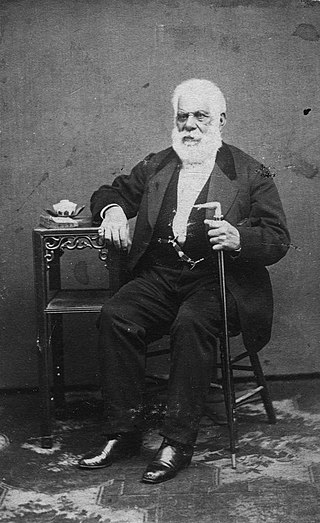
African American Californians or Black Californians are residents of the state of California who are of African ancestry. According to 2019 United States Census Bureau estimates, those identified solely as African American or Black constituted 5.8% or 2,282,144 residents in California. Including an additional 1.2% who identified as having partial African ancestry, the figure was 7.0%. As of 2021, California has the largest multiracial African American population by number in the United States. African Americans are the fourth largest ethnic group in California after Hispanics, Whites, and Asians. Asians outnumbered African Americans in the 1980s.

Barney Lancelot Ford was an escaped slave who became a wealthy entrepreneur and civil-rights pioneer in Colorado. Ford persevered in his quest for new businesses despite barriers due to racism, war, fire and unscrupulous partners. He was particularly interested in establishing barbershops, restaurants, and hotels. He also invested in mines. He was a civil rights pioneer, proponent of education, and a supporter of the Underground Railroad. He lobbied for the right to vote and successfully argued that Colorado should not be admitted to the Union until all males were allowed to vote. He led the formation of school programs and buildings.

The Cosmopolitan Hotel and Restaurant in Old Town San Diego State Historic Park is an American registered national historic landmark, built in the early 19th century by Juan Bandini and later purchased by Albert Seeley to serve as a stagecoach hotel. In 2010, restorations and added fine dining restaurants revived the hotel to its 1870s charm, making it again a focal point of the original downtown area.

The Theodore F. Payne House, also known as the Payne Mansion, is a Victorian house in the Lower Pacific Heights neighborhood of San Francisco, California, United States. Built in 1881 and designed by William Curlett in a mix of Stick, Eastlake, and Queen Anne styles, it survived the 1906 San Francisco earthquake and was listed on the National Register of Historic Places in 1980. It has been adapted to house a hotel and a restaurant.

Moses Rodgers House is a private home in Stockton, California. Built in 1898, it was added to the National Register of Historic Places in 1978.

